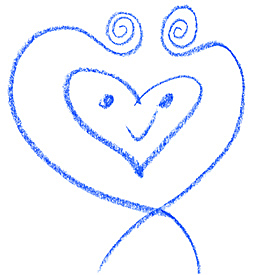In a difficult moment, sometimes something opens unexpectedly. What a blessing this can be. Not that the difficult experience is necessarily a blessing. It may or may not be. However, the opening – the discovery of a portal to possibility – can be a blessing.
But I’m getting ahead of myself.
In hurt moments we often feel compressed. Maybe we have hurt feelings or experience a disconnection in one way or another. Whatever the situation, we might feel sadness, fear, anger, shame, or some combination. If we have an embodiment practice, we might notice stress arising somatically – a tightening somewhere such as the chest, belly, or back. Perhaps we become numb to our emotions or sensations. We might notice stress in our thinking: either the pace of thinking might pick up, seem internally louder, or the content of our thoughts might feel distressing.
A powerful contemplation to try on, is: How do I treat myself when I feel stressed or hurt?
These internal experiences are a part of the human experience. Recognizing when we’re stressed is an important step towards discovering how to become responsive to our experience. Being responsive to our stress does not imply figuring it out alone: sometimes responsiveness means realizing we need support.
It feels important to me to acknowledge that the situations I am writing about are within a context of privilege. For those who are in dangerous situations right now, whether that’s interpersonal, systemically oppressive, in a collective situation like a war or other ongoing emergency, the space to reflect may be much more limited or not possible at all.
This awareness of our state of stress itself can create an opening. We often have habitual ways of coping with stress or feelings we find difficult. These strategies may have been around a long time; perhaps since childhood, or they might even be ancestral patterns. Stress responses tend to operate under our conscious awareness. This is not necessarily a bad thing. Whatever our coping strategies are, they are part of how we made it to this moment. And what worked for us in the past may not necessarily be how we’d like to consciously choose to respond to stress going forward.
Pausing to consciously acknowledge our stressful state may help us shift gears and make more contact with our felt experience. When we have the capacity to compassionately and curiously turn towards how we are in our bodies, breathing, and emotions, we deepen self-contact. We can potentially learn something about how the sacred life force is moving / not moving through us in that moment. Shifting our orientation towards our experience can create the possibility of discovery and inner restoration. What was stuck can move. What was hidden can come into the light of presence. What was hurt can be tended to. What was too much can gradually be included and integrated. What we've held alone can begin to be shared. When more of us is included in our wholeness, more becomes possible for us.












